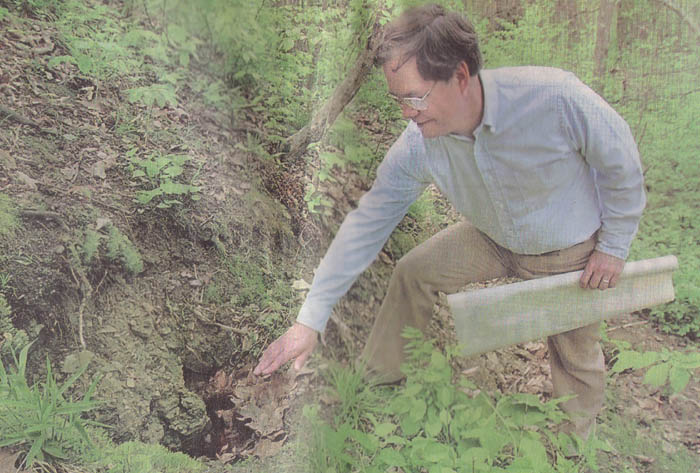

Smoke started coming up through the cracks in the floor of the 233,000-acre forest last summer, said U.S. Forest Service archaeologist Ann Cramer.
"It smelled awful when I went out to see it, like burning tar," Cramer told The (Cleveland) Plain Dealer for a story Monday. "It was coming out a pretty big hole, maybe 20 feet across. From a distance, it looked like a forest fire, there was so much smoke coming out.
An estimated 200 square miles of underground mineral deposits have burned since the fire began in 1884.
The fire has plenty of fuel. The coal seam--the Middle Kittanning Coal Seam--is up to 14 feet thick and runs into Pennsylvania, and there are about 600,000 acres of coal and abandoned mine shafts in this part of southeast Ohio. New Straitsville is about 49 miles southeast of Columbus.
The fire, according to the town's official history, was set in October 1884 by anti-union workers. They soaked railroad cars that were loaded with timber with oil, ignited them, and rolled them into mine openings.
"It was not until several days later that it was discovered, and when men saw that it could not be brought under control, they realized what a catastrophe was upon them," the history reports. "It was like a cancer eating into the heart of the valuable coal field, leaving scars upon the beautiful hills forever."
New Straitsville native Jackie Thomas Swelgin, 73, said the fire had some benefits.
"When I was young, the streets never froze over. When snow fell, it burned right off because the pavement was always warm," Swelgin sais. "People who had wells or cisterns could get hot water by dipping a bucket. They used to make coffee that way. There are old pictures of people frying eggs on rocks. I've seen 'em do it, too."
In 1938, the Works' Progress Administration hired hundreds of out-of-work Ohio miners to try to stop the fire. Bore holes were drilled 100 feet deep and clay was pumped in. Old shafts were bricked up to cut off air, and trenches were dug around non-burning parts of the coal seam.
It didn't work, and state officials now say there's nothing they can do.
"The bedrock is naturally fractured, so oxygen gets down to the coal seam where there is plenty of fuel to keep the fire going," said Doug Crowell, a geologist with the Ohio Department of Natural Resources.
"To put it off, you'd have to seal off all the routes that oxygen gets in. Maybe you could flood it, but I don't know where you'd get enough water."
Brooks Woofter, 79, said he never had to worry about cold hands while squirrel hunting.
"I'd stop and get my hands warm where the heat would come out of the holes," Wofter said. "Of course, it's still a-burnin'. No man alive can figure out how to stop it. Big shots tried when (President Franklin D.) Roosevelt was in, but it beat 'em."
Connie Dunkle, the unofficial town historian, said the fire seems to take a rest ever now and then."
"It's just like it goes to sleep. When it gets some air, it awakens again. People might forget about it for a while. But you know, it's always burning down there somewhere."